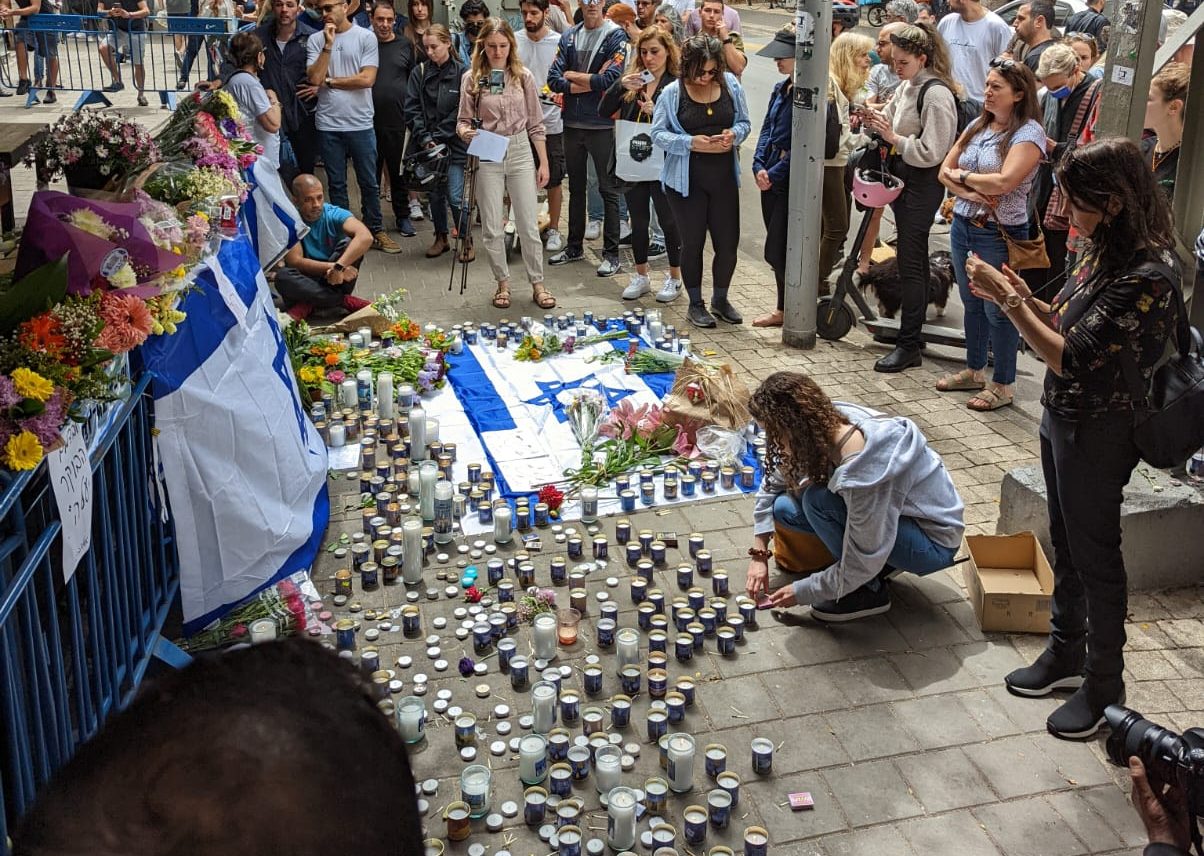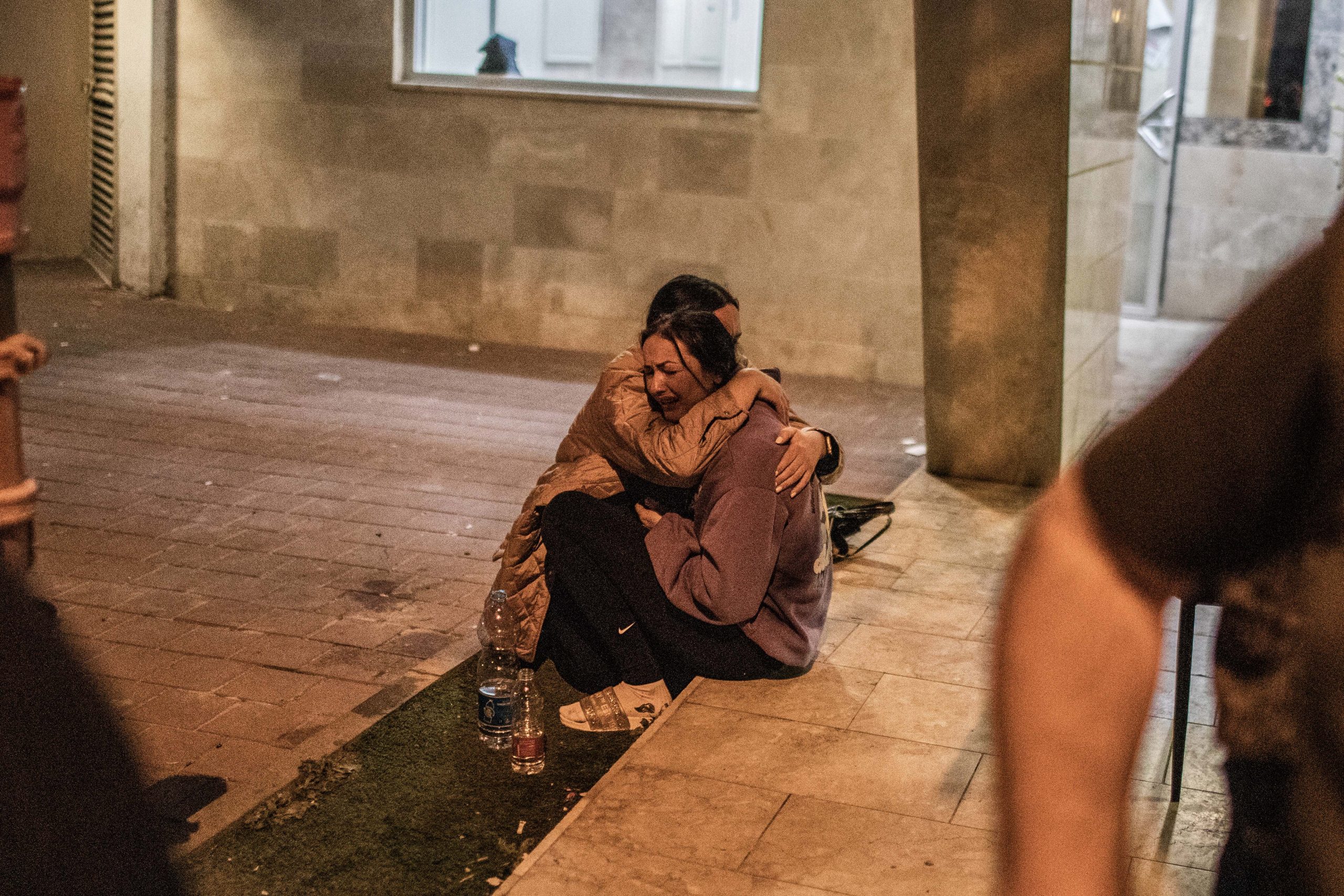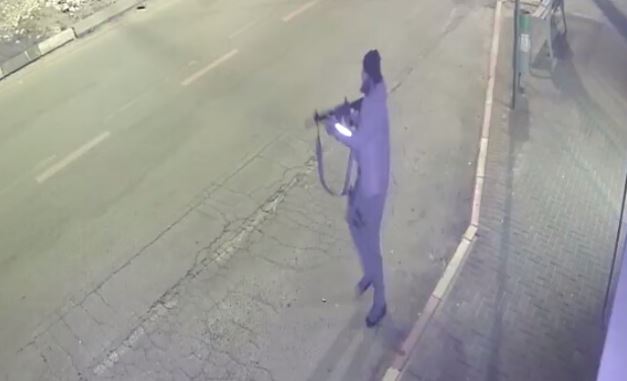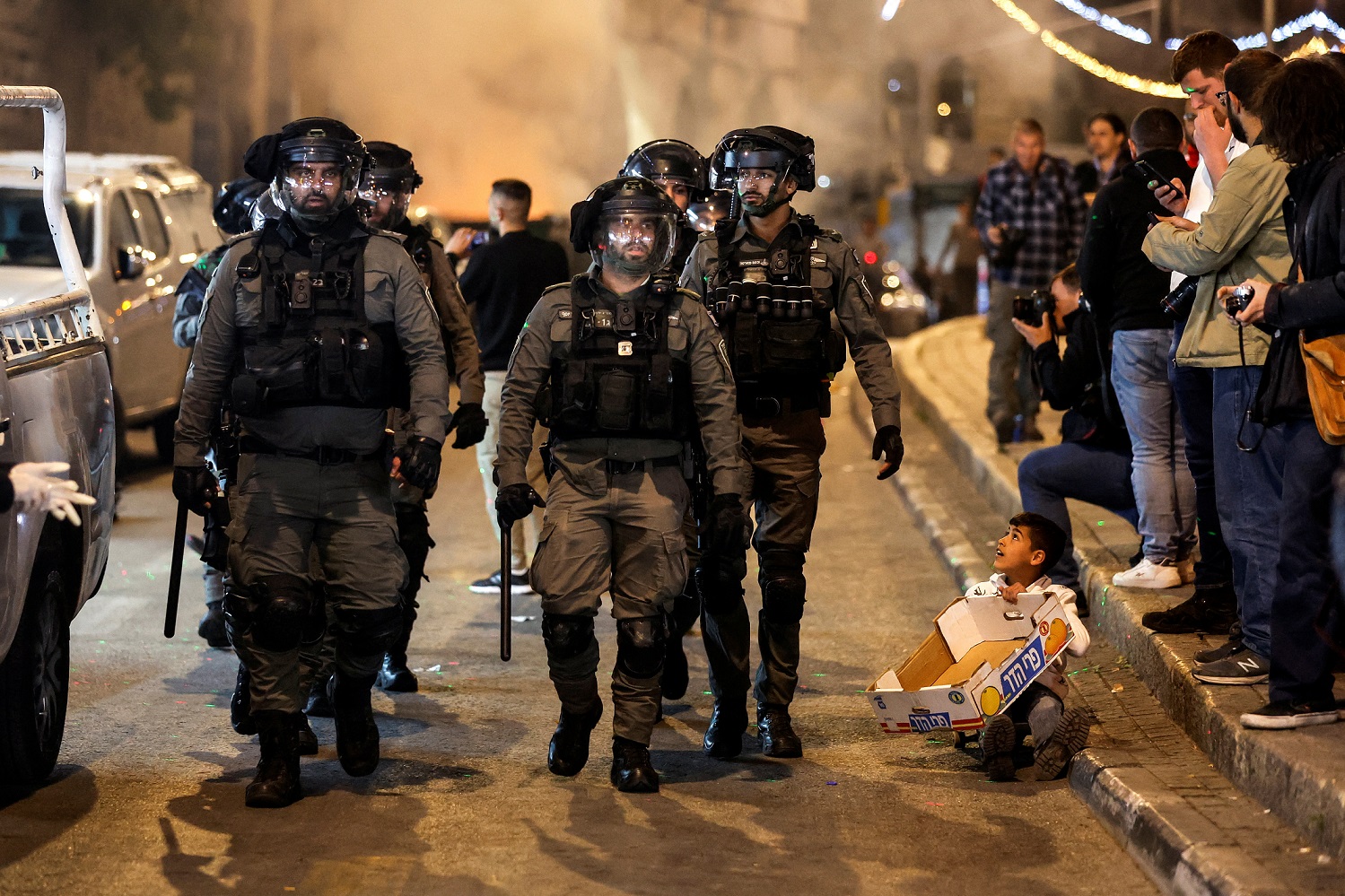Publications
INSS Insight No. 1585, April 11, 2022
The recent terror events in Israel can be examined through two prisms. Perhaps this is a wave of terror, of limited duration and not indicative of a fundamental systemic change. Alternatively, a systemic approach suggests that this is a terror campaign waged by Hamas, in coordination with Islamic Jihad and with Iranian support, which aims to unite the fronts of the Palestinian struggle against Israel in a comprehensive campaign that is a joint “resistance” effort of the various factions. Israel should adopt a strategy that denies Hamas the ability to control the boundaries and intensity of the campaign, and undermine the logic guiding the organization’s attempts to unite its components.
Israel finds itself amidst a series of violent incidents and terrorist attacks, two of which were carried out by Israeli citizens who in the past identified themselves with ISIS, and two attacks carried out by Palestinians from the Jenin area in the West Bank who infiltrated Israel through a breach in the security barrier. The occurrence of the attacks in central cities arouses military and public embarrassment. The security forces operated particularly vigorously against terrorist infrastructures in the Jenin region, resulting in incidents in which Palestinians were killed. On the first evening of Ramadan, riots by young Palestinians were once again seen at the Damascus Gate in Jerusalem.
The media, along with representatives of the security establishment, are defining the events as a new wave of terror, although there is still no certainty that it is indeed only a wave of terror. Relating to the events as a wave also dictates, to a large extent, the types of response, as a wave will ebb following its limited duration, and it does not fundamentally change the situation. In contrast, when it comes to a systemic phenomenon, the types of response suitable for a wave will not necessarily be relevant. Hence the importance of examining the events through a systemic perspective, that is, as a terror campaign that Hamas is leading from behind the scenes, in cooperation with Islamic Jihad and with Iranian inspiration and assistance. The campaign aims to maintain Hamas's main achievement from Operation Guardian of the Walls: multiple arenas – Jerusalem, inside Israel, the West Bank, the Gaza Strip, and southern Lebanon – and the ability to ignite all of them simultaneously.

According to the systemic interpretation, the recent attacks are a terror campaign in an arena that encompasses several fronts that influence and are influenced by one another:
- The Gaza Strip – under the complete control of Hamas, in close coordination with Islamic Jihad
- Jerusalem – Hamas has limited influence in the area due to the many actors and limited access. Consequently, it exploits events and incidents to foment terrorism and violence and focuses on incitement campaigns.
- The West Bank is used by Hamas for activity against settlers, the IDF, and the Palestinian Authority. Its efforts focus on building terrorist infrastructure, developing and operating channels for smuggling weapons and money, especially from Jordan, and inciting terrorism among individuals and other terrorist organizations.
- The Negev – joining with the population of Bedouin citizens of Israel to disrupt processes of the return of Israeli governance to the area and in order to create a territorial contiguity between the Gaza Strip and the West Bank.
- The internal Israel front – mainly: incitement of terrorist activity within radical groups among Arab citizens of Israel who have an Islamic fundamentalist views, such as former ISIS volunteers; monetary support; and encouragement of terrorist attacks in the heart of Israeli cities.
- Southern Lebanon – a front operated in coordination with Hezbollah and Iran, by Hamas recruits and other organizations in Lebanon. It serves as a smuggling route for weapons and terrorist funds into Israeli territory as well as a front for launching rockets into Israel.
The organizing logic of the campaign comprises a basic logic of resistance to the very existence of the State of Israel, and situational logic, which rests on the weakness of the Palestinian Authority and the loss of its political path. It aims to torpedo the processes of normalization between Israel and the Arab world and the strengthening of Israel's regional standing, against the backdrop of the relegation of the Palestinian issue to the margins of regional and international attention. The two logics are pursued via armed struggle: terrorism, with Hamas as the instigator, which works directly to establish terrorist infrastructures not only in the Gaza Strip but also in the West Bank and among Israel's Arab citizens; build escalation frameworks in East Jerusalem; coordinate activity with other organizations, in particular Islamic Jihad (which has grown much stronger recently, especially in the northern West Bank thanks to Iranian aid money), the Popular Front, and also Hezbollah; and prepare the atmosphere for terrorism through ongoing incitement.
In tandem, Hamas is operating indirectly via an effort to leverage violent incidents and terrorist attacks that others have perpetrated, or in organization of terrorist attacks without taking responsibility for them, while using proxies, including Islamic Jihad, the al-Aqsa Martyrs Brigades (of Fatah), or operatives identified with ISIS. The purpose is to control the fronts in the campaign, while denying Israel the grounds for taking action against it in the Gaza Strip. Therefore, when Hamas seeks to maintain its standing as "the spearhead of the resistance" in the armed struggle against Israel and its interest is to maintain calm in the Gaza Strip, it vigorously strives to activate the other fronts.

In a discussion on April 2, Ziyad al-Nakhalah, the leader of Islamic Jihad, who just last month met several times with the Iranian leadership, and Hamas leader Ismail Haniyeh declared the continuation of close coordination between them in the political and military spheres. The fact that Islamic Jihad is operated by Iran leads to assessment that Iran is the motivating force behind the terrorist attacks (through directives, smuggled weapons, provision of knowledge for the independent production of weapons, and money), with its aim being to disrupt the alliance forming between Israel and Arab countries. Tehran is also likely cultivating Hamas and Islamic Jihad as its proxies, retaliating for Israel's actions against Iran, including those carried out in its territory.
Hamas is currently making sure to maintain quiet in the Gaza Strip. If Hamas initiates escalation in the Gaza Strip before the events expand to Jerusalem and the Palestinian Authority, it will find it difficult to explain to the Gaza public why it is causing major damage to the reconstruction projects underway led by Egypt and Qatar and the employment of workers in Israeli territory (only recently Israel increased the number of work permits to 20,000). Hamas also seeks to exploit the calm for the purpose of restoring and even upgrading the terrorist infrastructure damaged in Operation Guardian of the Walls, as preparation for the next round of conflict (only last week, Hamas launched rockets toward the sea, signaling to Israel that it is also ready for a military confrontation in the Gaza Strip). However, simultaneously the organization is also striving (mainly through Saleh al-Arouri, in charge of Hamas's military wing in the West Bank, which operates from Istanbul, Damascus, and Beirut) to develop terrorist infrastructures in the West Bank and in South Lebanon, to tighten the coordination with Islamic Jihad, to strengthen the channels with Israel's Arab citizens, and to prepare conditions for escalation of violence in East Jerusalem.
The month of Ramadan, which began recently, could be a backdrop for increased incitement. Israel's responses and countermeasures translated into arrests of Arab citizens of Israel who belong to ISIS, along with large-scale intelligence and military activity in the West Bank, which led to incidents of gunfire and to the killing of terrorists identified mostly with Islamic Jihad, and to arrests of many suspected of engaging in or abetting terrorism. These actions inflame Islamic Jihad and Hamas operatives in the West Bank and raise the level of tension with the civilian population. Against the backdrop of this escalation dynamic, Hamas might perhaps not succeed in restraining Islamic Jihad from launching rockets from the Gaza Strip into Israel, thus broadening the campaign to the Gaza front and to the development of a military confrontation such as Operation Guardian of the Walls.
The Palestinian Authority is losing its relevance vis-à-vis what is happening, slowly aligning itself with the moods on the Palestinian street and the resistance to Israel. Al-Aqsa Martyrs Brigades affiliated with the Fatah movement are cooperating with the other factions. Palestinian Prime Minister Mohammad Shtayyeh condemned the assassination of the three Islamic Jihad operatives last weekend in Jenin and claimed that "the perpetrators of this crime and the crimes that preceded it need to face the International Criminal Court." Clearly the development of a multi-front campaign will pose a challenge for the Palestinian Authority and its security apparatuses, which are not active in the terrorist capital, Jenin, and the PA might respond by disrupting the security coordination with Israel to the point of stopping it.

The Israeli government is striving to maintain calm in Jerusalem and the West Bank, to differentiate between terrorist operatives and infrastructure and the civilian population that is not involved, to maintain the fabric of life, and to fulfill intentions to ease restrictions during the Ramadan period. The government has even presented an objective of strengthening the Palestinian Authority and maintaining the security cooperation with the Palestinian security apparatuses. However, given the incendiary discourse in the Israeli public and in the Palestinian public, it will have difficulty translating these intentions into actions on the ground.
Conclusion and Recommendations
If Israel is indeed facing a multi-front campaign led by Hamas, it should adopt a strategy that aims to undermine the logic that unifies the fronts and deny the organization control over the boundaries of the campaign. However, despite the desire to separate the fronts, Israel cannot cooperate with Hamas's dual strategy, which maintains calm in Gaza and tries to ignite the other fronts. Therefore, it should consider directing efforts against Hamas, not necessarily military, as follows: (1) stop the transfer of money from Qatar to Hamas, unless Doha restrains the incitement and the involvement of Hamas in fronts outside of the Gaza Strip and stops using al-Jazeera to fan the flames; (2) enlist Egypt in placing pressure to restrain Hamas by stopping the reconstruction of Gaza and closing the crossings into Sinai; (3) rethink the policy of increasing the number of work permits in Israel for workers from Gaza, especially after Hamas's takeover of the Ministry of Civilian Affairs in Gaza, such that it determines the eligibility for permits.
Jerusalem is the most volatile front, and it has the potential to unify the others. Consequently, it is necessary to invest intensive efforts in calming the tension in the city during Ramadan and enabling Muslim worshippers to enter al-Aqsa, while preventing tension between them and Jews entering the Temple Mount (separating the times and dealing immediately with mutual provocations). Simultaneously, it is important to enlist Jordan, with the United States' support, in calming the situation in the Temple Mount complex. The understandings reached regarding expanding the number of guards in the Waqf system should be implemented, in return for Jordan ensuring the prevention of intervention by Hamas operatives and the northern branch of the Islamic Movement in the Waqf's activity.
Israel is challenged by the Palestinian Authority's negative contribution to the incitement and inflammation by its senior officials, and its antagonistic policy toward Israel on every international stage. However, Israel should be careful not to push the Palestinian Authority into the hands of Hamas, ensure that the fabric of life in the territories of the Palestinian Authority is maintained in order to distance the population from terrorism and violence, strengthen the coordination with the PA's security apparatuses, enable them to impose law and order and deal with Hamas's infrastructure, and even increase the effort to rebuild the Palestinian economy in the West Bank.
Islamic Jihad has grown significantly and gained strength in the northern West Bank and the Gaza Strip thanks to Iranian support. Its increased strength makes it a greenhouse of increasing amounts of terrorism, a source of attraction for activists who belonged to other organizations, and a worsening threat to the stability of the Palestinian Authority. Consequently, Israel should expose the Iranian contribution to the current deterioration of the security situation in the Israeli-Palestinian arena, whether it is a passing wave of terrorism or a systemic, long-term escalation.



